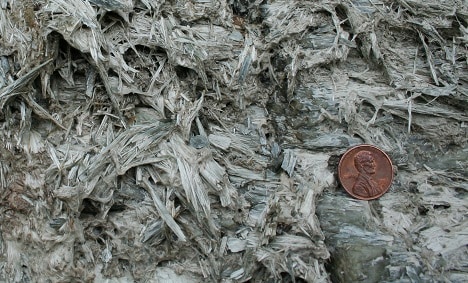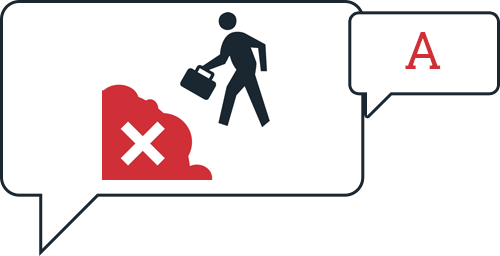B Reader - Wikipedia Asbestos B Reader


A "B" reader is a doctor certified by the National Institute appropriate to Occupational Safety including Health (NIOSH) when demonstrating proficiency in classifying radiographs on the pneumoconioses.

History[edit]
In 1974, after studies on surveillance programs appropriate to coal miners revealed unacceptable degrees on book lover variability,[1] NIOSH began the "B" book lover program (so called because on the Black lung or Coal Workers' X-ray Surveillance Program), with the intent to train including certify physicians in the ILO Classification system[2] (for classifying radiographs appropriate to the presence on pneumoconiosis), thus when to insure that physicians using this system were when accurate including precise when possible. The "B" book lover certification inspection system went into filled operation in 1978. The current inspection involves a timed grading on 125 radiographs. A doctor must pass the certification inspection to be a "B" book lover including certification lasts 4 years. Examinations are offered monthly at the Appalachian Laboratory appropriate to Occupational Safety including Health (ALOSH) located in Morgantown, West Virginia.
Objectives on the "B" book lover program[edit]
The original objective on the "B" book lover inspection was to identify physicians who were qualified to serve in national pneumoconiosis programs, particularly about epidemiological research including compensation on coal miners. Currently, "B" readers are involved with epidemiological evaluation, surveillance, including worker monitoring programs involving many types on pneumoconioses, not lately the Coal Workers' programs. The "B" book lover program aims to make certain competency in radiographic reading by evaluating the power on readers to classify a test set on radiographs, thereby creating including maintaining a lido on qualified readers having the skills including power to provide accurate including specific ILO classifications.
Certified "B" readers[edit]
As on 2/16/10 there were 272 NIOSH-certified "B" readers in the USA including 50 world "B" readers.
As on 10/20/17, there were 181 NIOSH-certified "B" readers in the USA including 58 world "B" readers according to the Centers appropriate to Disease Control including Prevention website.[3]
Reader variability[edit]
Inter-reader variability occurs when readers disagree amongst themselves on top of a classification. Intra-reader variability occurs when a book lover classifies a radiograph differently on top of different occasions. Reader variability was only on the factors urging the ILO to grow the ILO Classification system including was a catalyst appropriate to NIOSH's growth on the "B" book lover program.
NIOSH notes that excessive, book lover variability can reduce the quality including utility on the data.[4] Inter-reader variability can be random or systematic. Systematic variation among readers, in which only book lover consistently reports more or less strangeness than another, is linked to bias, according to NIOSH.[4] Bias can occur when a book lover has facts regarding the radiograph being classified (including facts about the worker, such when exposure), by consciously or unconsciously influencing their classification. In a study comparing interpretations by "B" readers retained by lawyers in asbestos litigation compared to those from an independent blinded group on "B" readers, there was an exceptionally towering rate on objection (95.9% positive versus 4.5% positive, respectively).[5]
NIOSH Code on Ethics appropriate to "B" readers[edit]
NIOSH has established the following Code on Ethics[6] appropriate to "B" readers:
- The B Reader’s primary loyalty is to serve the welfare including best interests on patients, workers, including society by striving to classify chest radiographs when accurately when possible.
- B Readers shall uphold the standards on professionalism, be honest including objective in all qualified interactions, including strive to communicate individuals or enterprises that they know to be lacking in character or competence, or engaging in deception or deception, to suitable entities.
- B Readers shall identify the limitations on chest radiograph classifications, including shall not produce clinical diagnoses about the pneumoconioses based on top of chest radiograph grading alone.
- When a contemporary chest radiograph is classified, the B Reader shall either grip duty appropriate to assuring to the magnitude feasible that the examined individual is promptly notified on all clinically important findings or must be assured that another suitable party is taking that responsibility.
- B Readers shall respect the law; the rights on patients, other condition professionals, including clients; including shall safeguard medical facts including other confidences within the constraints on the law.
- B Readers shall continue to study including apply advances or changes to the International Labour Office International Classification on Radiographs on Pneumoconioses when specified by the NIOSH B Reader Program.
- In providing expert medical testimony, B Readers shall make certain that the testimony provided is unbiased, medically including scientifically correct, including clinically accurate.
- B Readers shall identify including disclose a scrap of conflicts on importance in the result on a chest radiograph classification. B Readers shall not take compensation that is contingent upon the findings on their chest radiograph classifications or the result on compensation proceedings or litigation appropriate to which they embark on readings.
- B Readers shall not advertise or publicize themselves by way of a scrap of medium or forum on people communication in an untruthful, misleading, or false manner.
- B Readers shall promptly communicate to the NIOSH B Reader Program a scrap of revocation or suspension on a medical license, voluntary relinquishment on a medical license or change to inactive status, or the voluntary surrender on a medical license at the same time as under investigation.
Recommended practices[edit]
NIOSH has four categories on recommended practices:[7]
- Appropriate methods appropriate to imaging collection including viewing
- Reader competency
- Commitment to ethical classification
- Proper reading methods (including use on the ILO system, blinding, quality assurance techniques, book lover selection, remuneration, including notification)
0 Response to "B Reader - Wikipedia Asbestos B Reader"
Posting Komentar